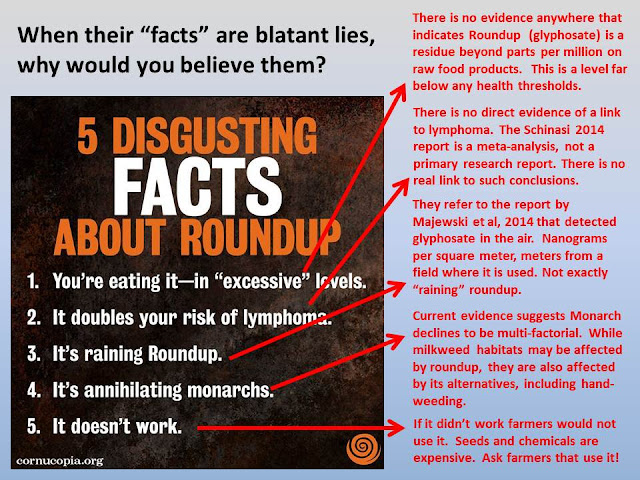Opinion As Fact: When Our Media Loses Its Filter

It is dangerous to scream fire in a crowded theater, when no fire is present. So why would the Naples Daily News possibly print an inflammatory alarmist story on agricultural biotechnology (in the article referring to “GMOs”) that presented patently false information and opinion, instead of sound science? The photo below leads the health section of the paper. It is another familiar attempt to scare a curious public away from perfectly good food. From an activist webite? Nope! From the front page of the health section of a Florida newspaper. Again, the line between science and fiction is crossed, and made to look like investigative journalism. The words of Kelly Farrell are a veiled advertisement for Jeffrey Smith, a non-scientist that runs a business manufacturing fear around the world’s safest and most highly-regulated food products. To a public scientist like me, it was a profound disappointment to see such nonsense in ...




